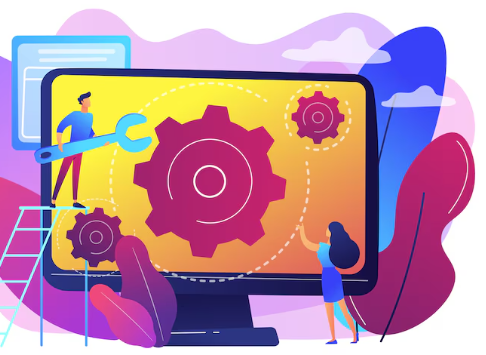Strong maintenance starts when you choose the right tools and follow a smart plan. When machines stop, even for a short time, you lose money and time. Software CMMS helps you track tasks, fix problems fast, and keep everything in order. But not every system matches your daily work. To pick the best one, spot your main needs, ask the right questions, and test it with real jobs.
Understand Your Needs First
Before you reach out to any provider, pause and examine what your business really needs. Consider your team’s size, the kind of assets you manage, and the daily issues you face.
Ask yourself:
- What kind of maintenance do we carry out?
- How often do breakdowns slow our work?
- Who will use the system daily?
Answering these can trim your options quickly and lead you to better decisions. You don’t want to chase features you won’t ever use.
Look for a User-Friendly Interface
Platform with lots of complications can frustrate your team. Choose one that lets your staff jump in with ease, even with little training. When the design feels natural, your team will stay on task and won’t lose time fumbling through menus.
Look out for:
- Clean dashboard layout
- Quick navigation options
- Clear labels and icons
Good design isn’t just nice to have—it helps you get more done.
Check for Flexibility and Growth
Business grows with time, and teams grow with business. Your work becomes bigger or more difficult. So, it’s smart to choose a system that can grow with you, so you won’t need to change it later.
What to check:
- Can it manage more users or assets later?
- Does it allow custom features?
- Is mobile use possible?
Growth should not mean disruption. The right system will scale without pain.
Focus on Support and Training
Even the best system can trip you up without strong support. Make sure the provider offers clear guidance and fast responses. Training tools should be simple and easy to follow.
A good provider will offer:
- Quick-response support channels
- Clear user guides or videos
- Regular updates with instructions
Reliable help keeps things running when problems arise. You won’t have to waste time guessing what went wrong.
Prioritise Local Knowledge
Prefer a provider who is familiar with Malaysian industries and understands local challenges better. This will help tailor the system to match regional rules, weather, and work culture.
This means:
- Local time support
- Understanding of local compliance
- Familiarity with common equipment types
It’s easier to solve problems when the provider knows your environment. They’ll also speak the same language—literally and culturally.
Test Before You Commit
When possible, ask for a test run. Trial gives you a feel for how well the system fits into your daily workflow. You’ll see quickly if it solves more problems than it creates.
What to do:
- Try entering real data
- Assign tasks to your team.
- Track a few days of work.
Real use reveals flaws that brochures hide. You’ll know if the system slows you down or helps you move quicker.
Evaluate Reporting and Analytics Tools
Reports show you what’s working and what’s failing. Solid CMMS will gather your data and turn it into simple charts and logs. That helps you spot waste, track job history, and fine-tune your planning.
Things to look for:
- Customisable reports
- Real-time data tracking
- Easy export to Excel or PDF
Without proper reporting, you’re flying blind. With it, you’ll make smart, data-backed decisions.
Consider System Security and Data Backup
Maintenance records matter. If your data disappears, you lose history, cost tracking, and planning. Choose a provider that keeps your data safe and recoverable.
Ask questions like:
- Is the system cloud-based or on-premise?
- How often does it back up data?
- What security measures protect your info?
Never assume your data is safe—check and confirm it. The right provider guards your records like a vault.
Match Features to Real-World Workflows
Fancy tools don’t mean much if they don’t match your daily work. The best CMMS tools make tasks quicker, not harder. Match features to jobs your team already does.
Look for:
- Simple work order creation
- Job scheduling
- Inventory tracking
Don’t get swayed by long feature lists. Focus on what your team uses most often.
Ensure Easy Integration With Current Tools
Your business may already use finance software, inventory logs, or task managers. The software CMMS should plug in without breaking those tools. A system that plays well with others saves time and cuts errors.
Make sure it supports:
- API access or import tools
- Compatibility with current platforms
- Seamless data sync
When systems can’t talk to each other, your team will do the work twice.
Get Staff Input Before Deciding
Your team will use the software daily. Their insight matters more than flashy demos. Ask for their thoughts during trials and get honest feedback.
Ways to involve them:
- Short demo sessions
- Ask what features slow them down.
- Let them try task creation and tracking.
Their comfort means smoother onboarding later. You’ll also catch early red flags.
Ask About Update Cycles
Technology moves fast. You don’t want a system that grows stale or can’t handle new asset types or tools. Choose a provider who improves often without making you start from scratch.
Check:
- How often do they update
- If updates cause downtime
- Whether updates cost extra
Regular, quiet updates show the provider stays serious about staying current.
Check What Real Users Say About the System
Brochures only show the shiny parts. To see how a system truly works, dig into what real users say. Reviews often uncover issues and wins you won’t spot in a short demo. They also show how providers treat their customers after you buy.
Watch for reviews that:
- Show how easy it feels to use every day.
- Tell if support teams fix problems fast.
- Share real problems users ran into.
- Explain if the system grows with the business.
Final Thoughts
Good tools help your team work better and worry less. Clear systems, quick support, and useful features all help you win the day. A software CMMS should fit your team’s work and remove delays, not cause more. As you search through your choices, dig deep and spot how each system handles your real work. When you grab the right one, it does more than just help—it stands with you and powers your business forward every step of the way.
Frequently Asked Questions
1. How do I spot if a system fits my business?
Start by counting your team, listing your tools, and checking what jobs you do each day. A good system should follow your flow, not twist it. Try a few out, load real jobs, and see which one clicks and moves smoothly with your daily work.
2. Can small teams still use these systems?
Yes, they sure can. Many systems suit smaller teams and stretch as your business grows. You don’t need all the bells—just the tools that fix your current troubles. Hunt for simple systems that track jobs, gear, and tasks without slowing anyone down.
3. What should I try during a free test?
Create real jobs, load in your tools, and send tasks to your team. Watch how quickly the system moves and how easy it feels to tap through. Ask your team what parts flowed and what got stuck. A good test shows if the system fits into your workday without trouble.



